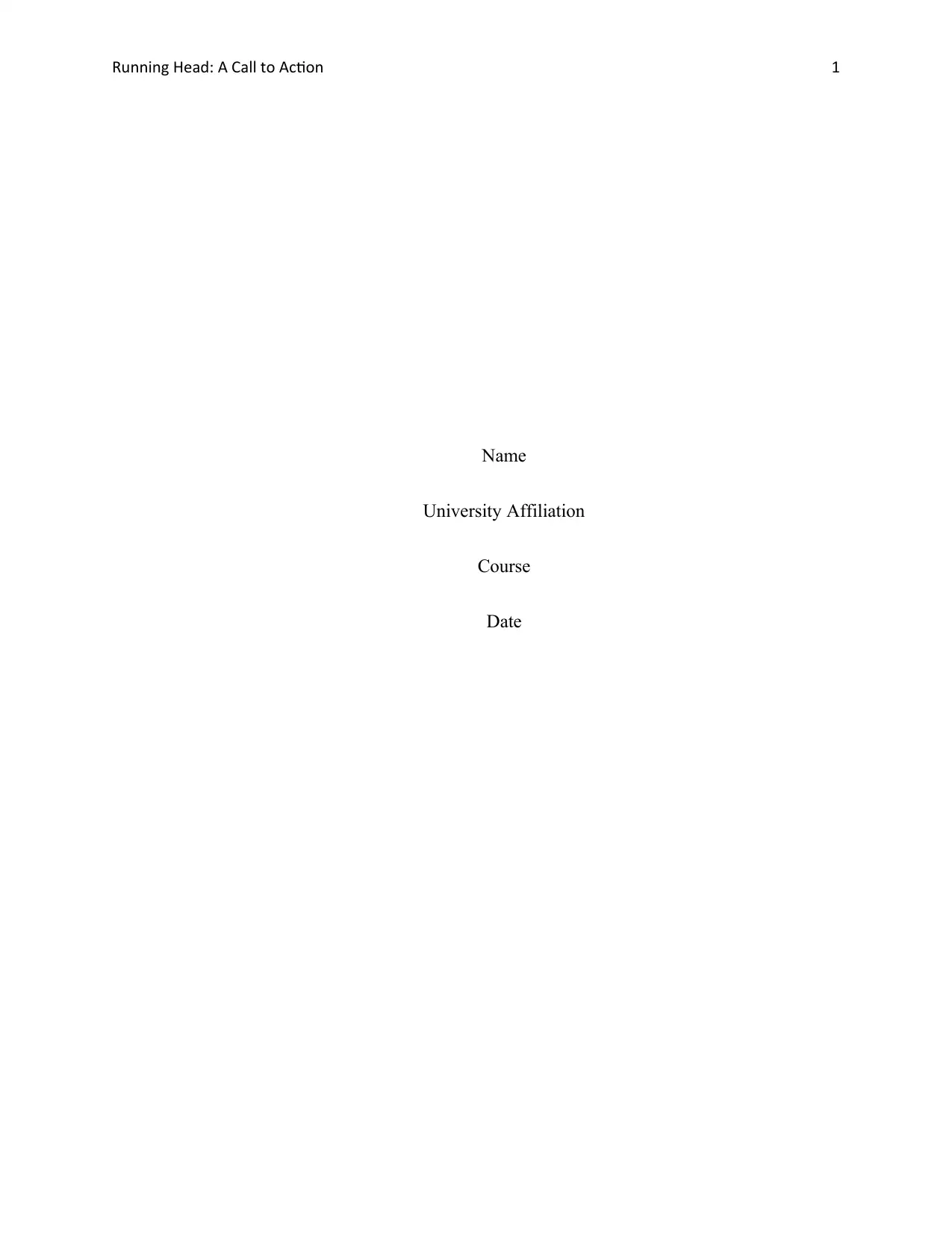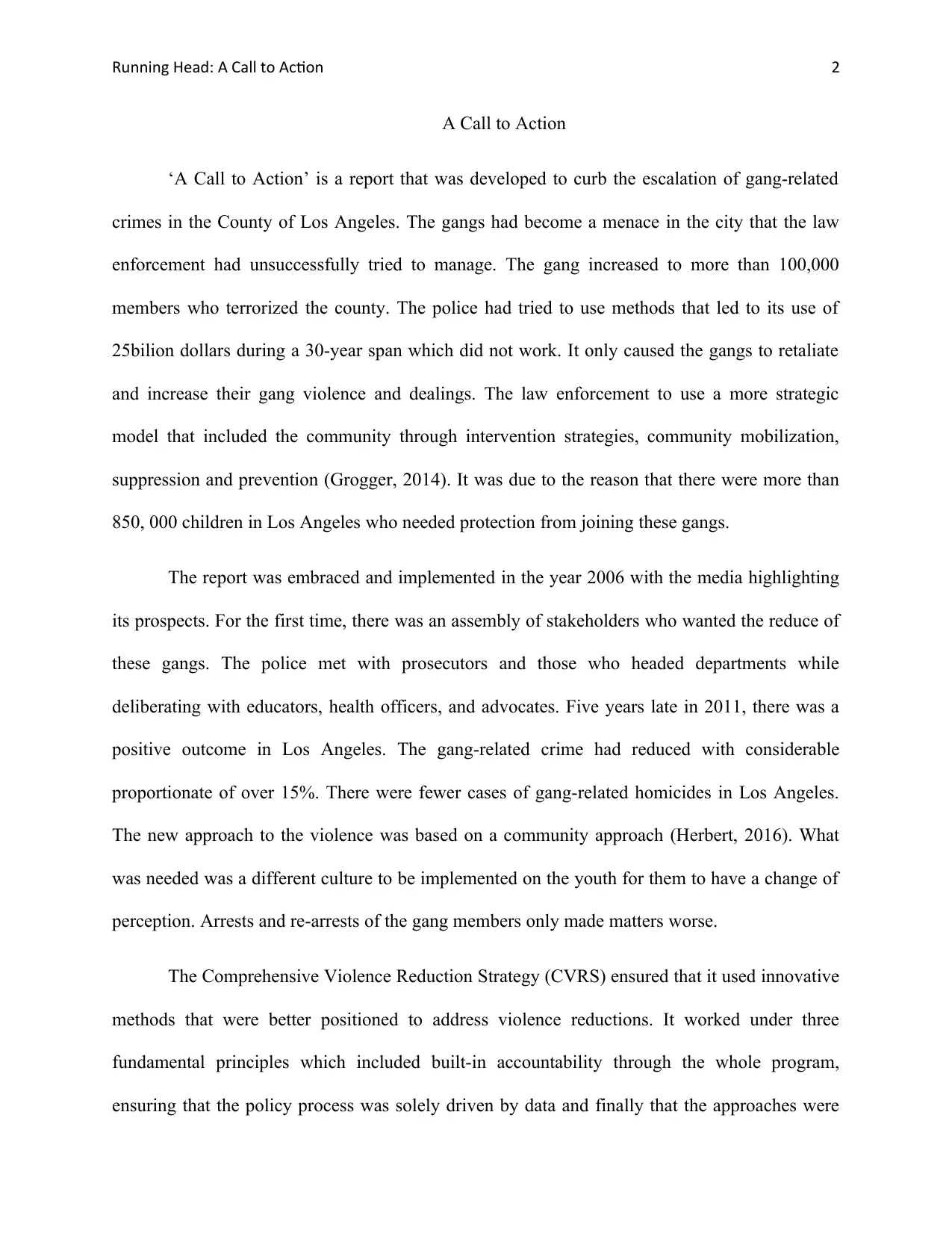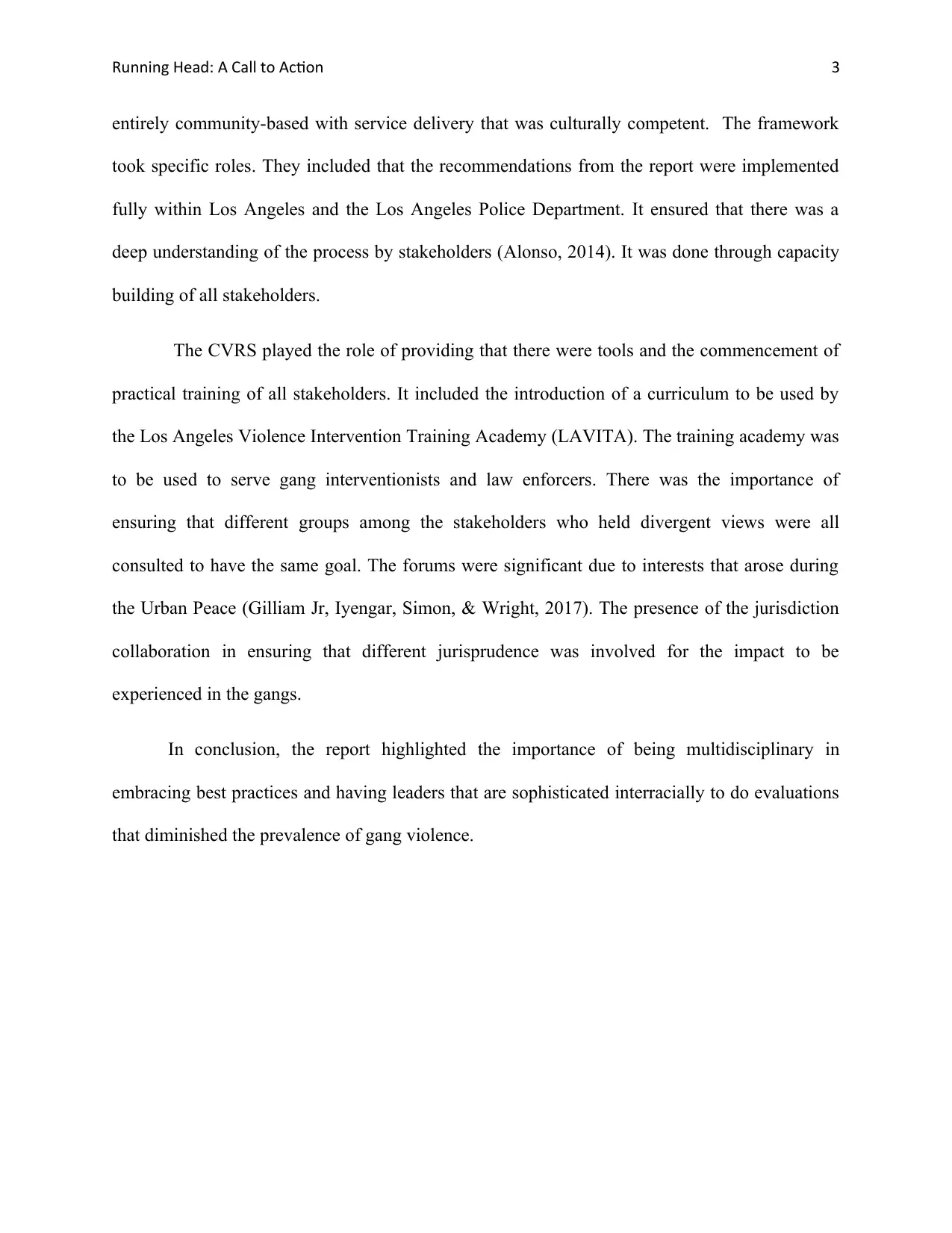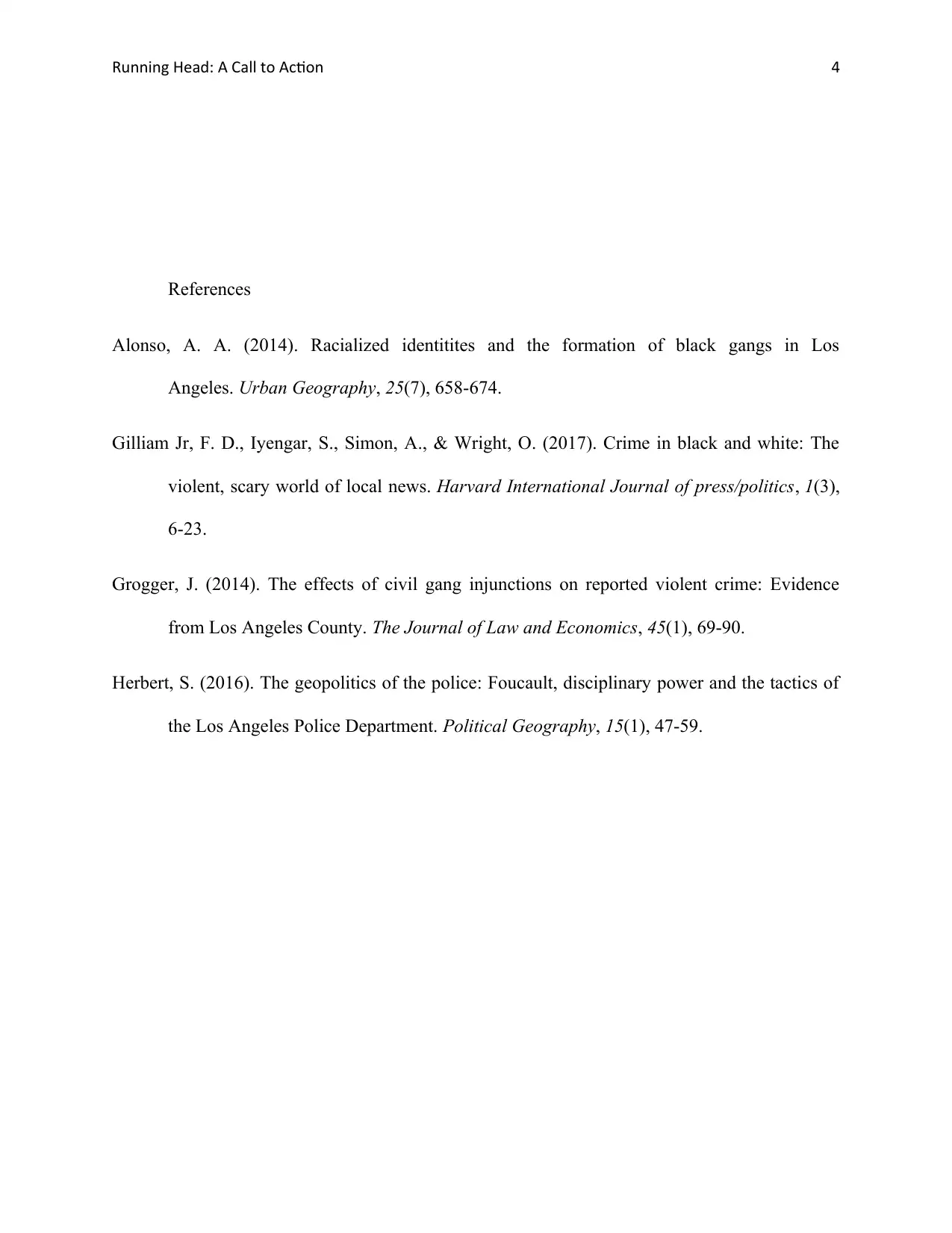Report on 'A Call to Action': Community-Based Gang Violence Reduction
VerifiedAdded on 2023/06/03
|4
|787
|493
Report
AI Summary
This report examines 'A Call to Action,' an initiative developed to combat escalating gang-related crimes in Los Angeles County, where over 100,000 gang members terrorized the area. Traditional law enforcement methods proved ineffective, costing $25 billion over 30 years without success. The report advocates for a strategic model involving community intervention, mobilization, suppression, and prevention to protect over 850,000 children from gang recruitment. Implemented in 2006, 'A Call to Action' brought together stakeholders, including police, prosecutors, educators, and health officers, resulting in a 15% reduction in gang-related crime by 2011. The Comprehensive Violence Reduction Strategy (CVRS) employed innovative, data-driven, community-based approaches, emphasizing accountability and cultural competence. The initiative included capacity building, training through the Los Angeles Violence Intervention Training Academy (LAVITA), and stakeholder consultation to diminish gang violence through multidisciplinary best practices and sophisticated leadership.
1 out of 4






![[object Object]](/_next/static/media/star-bottom.7253800d.svg)